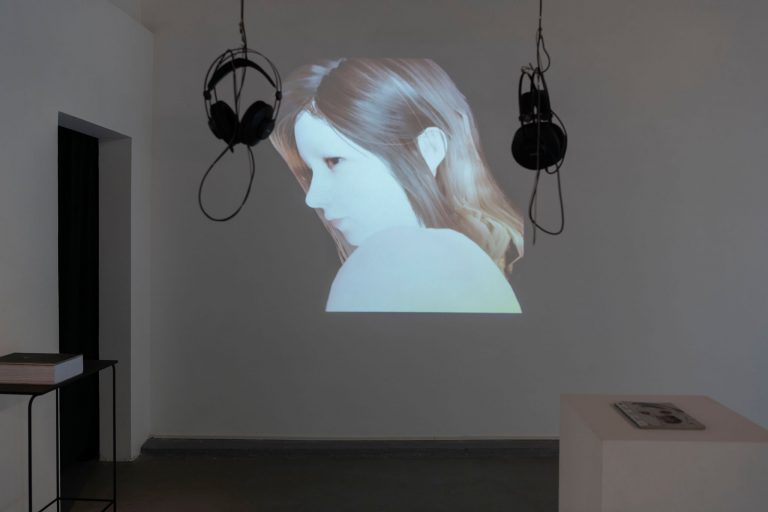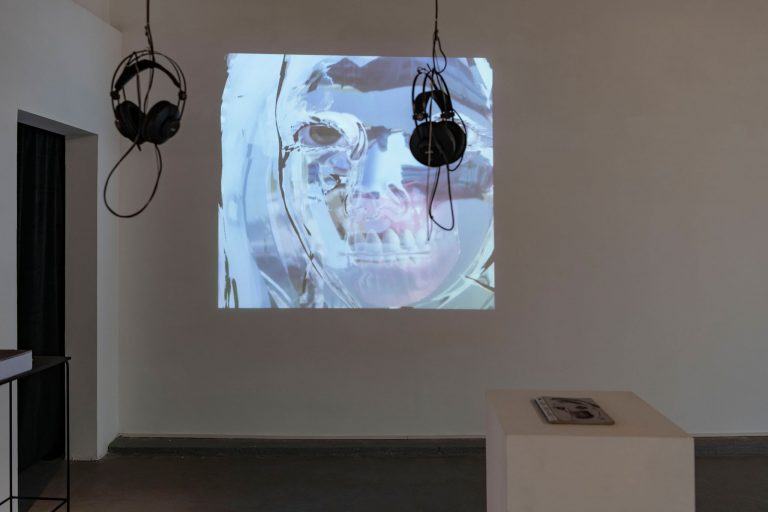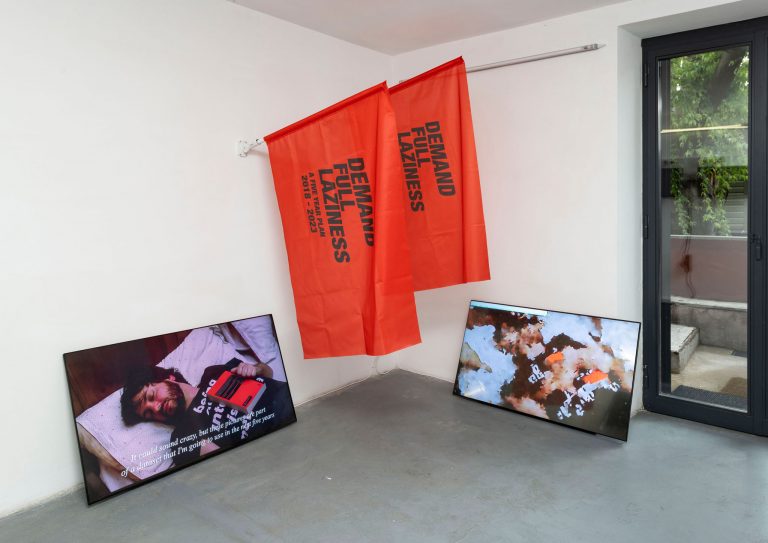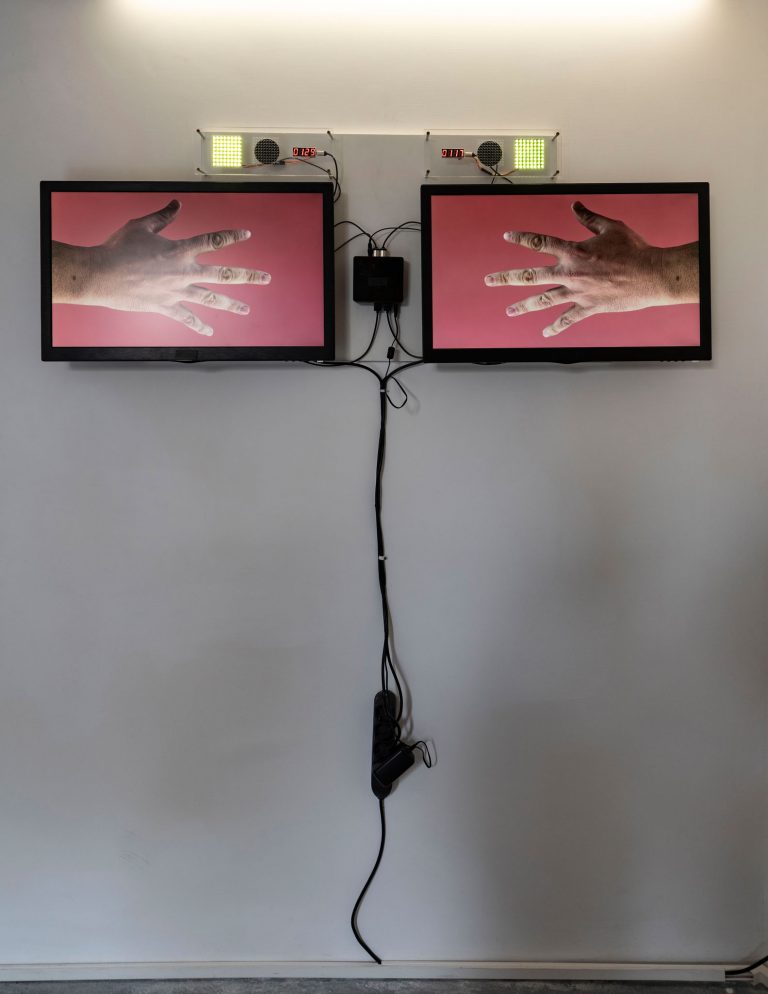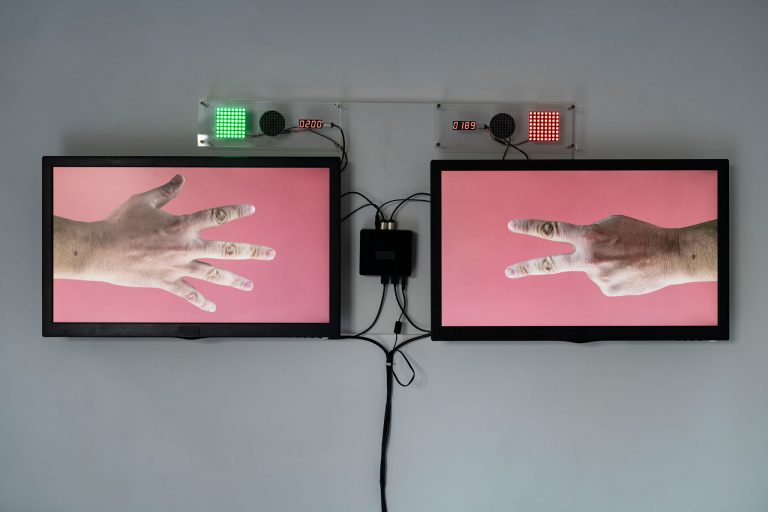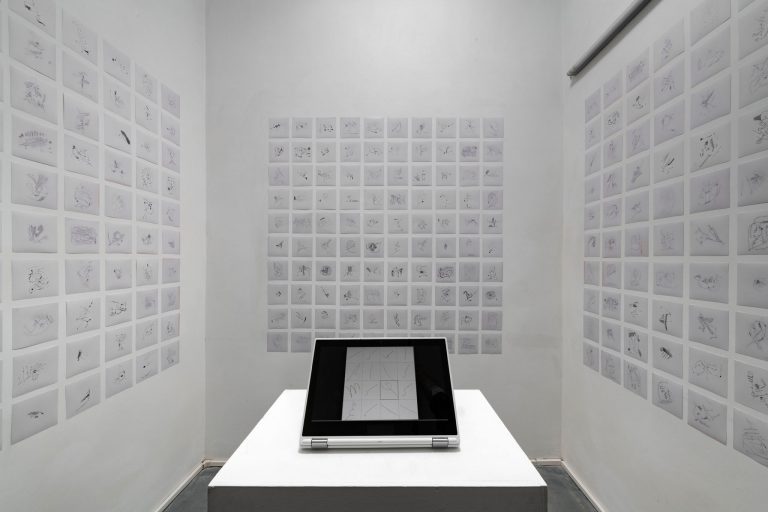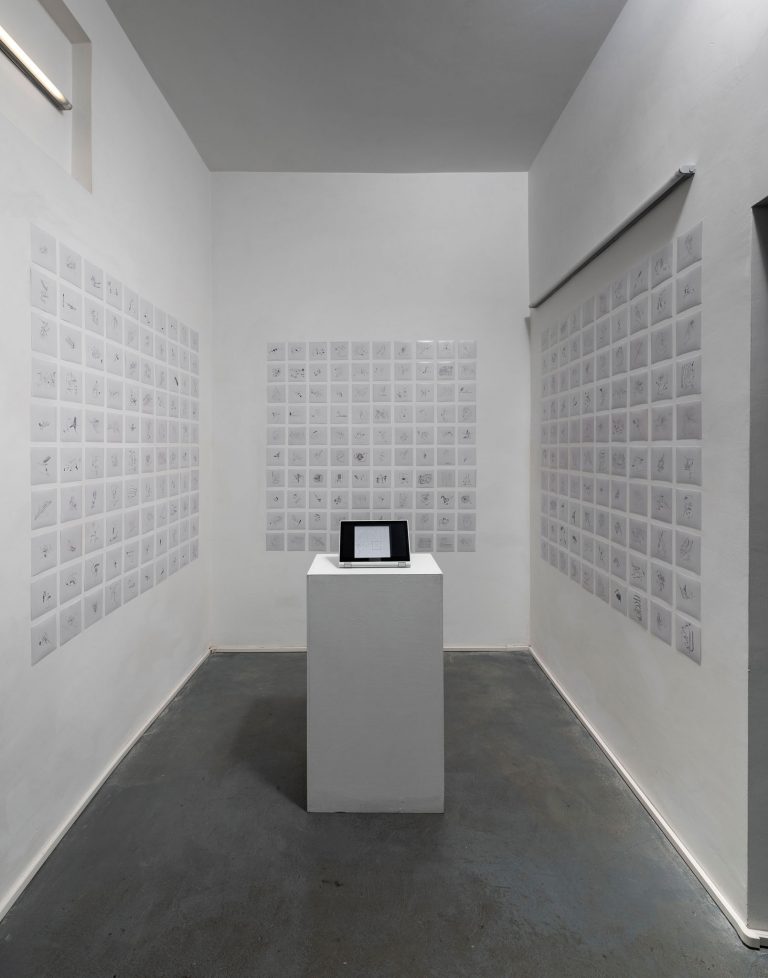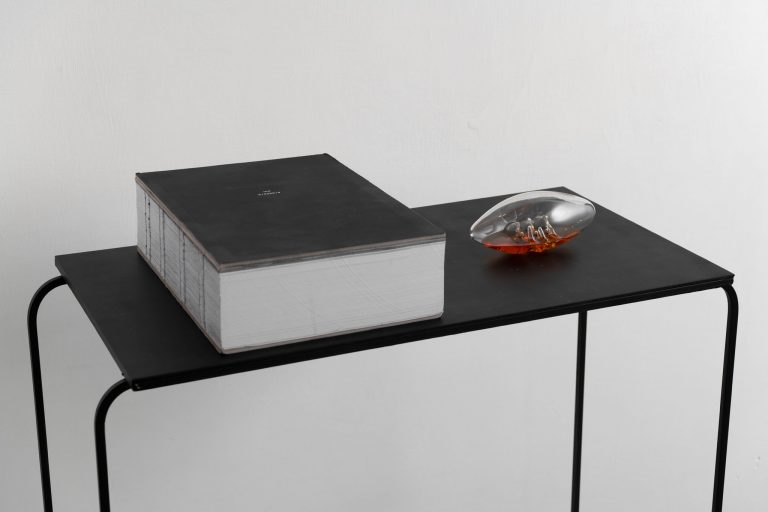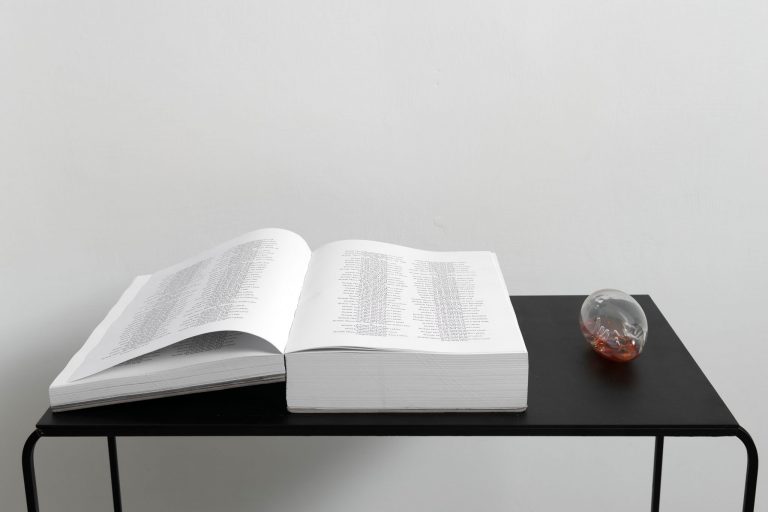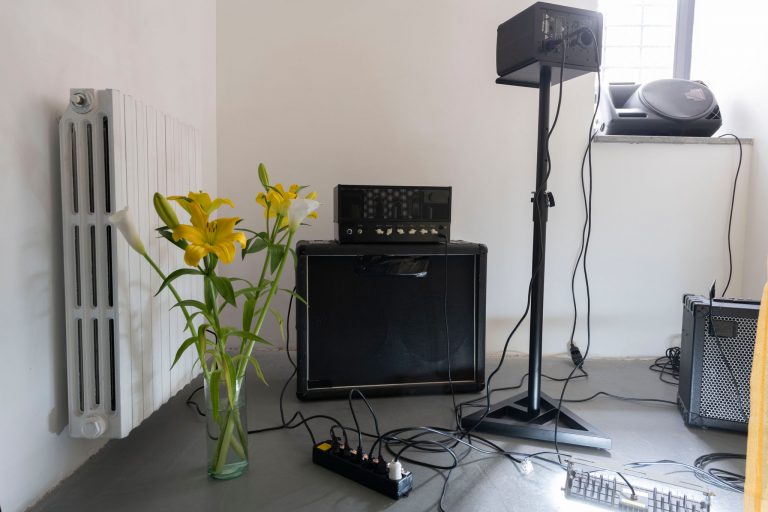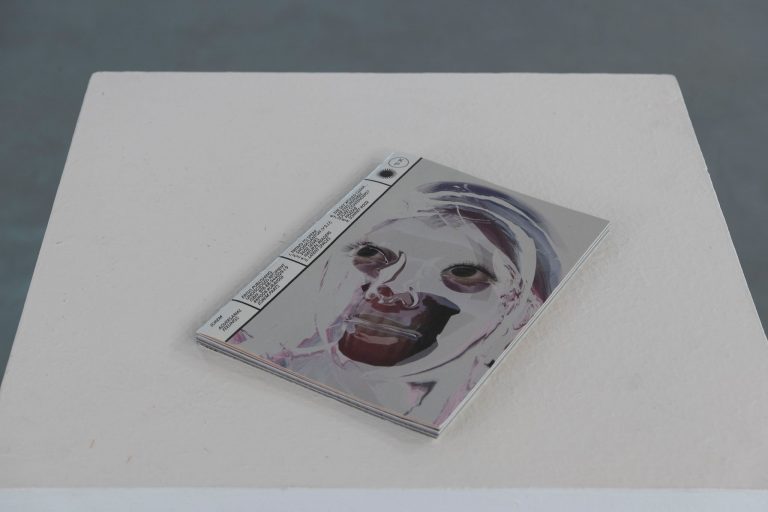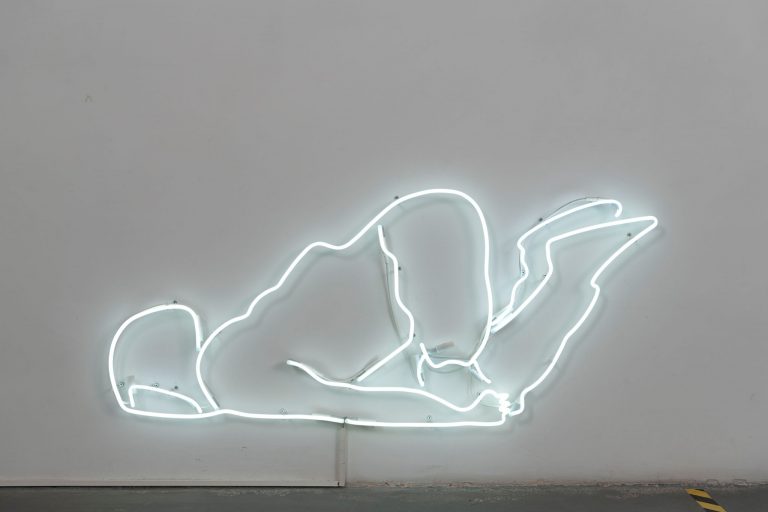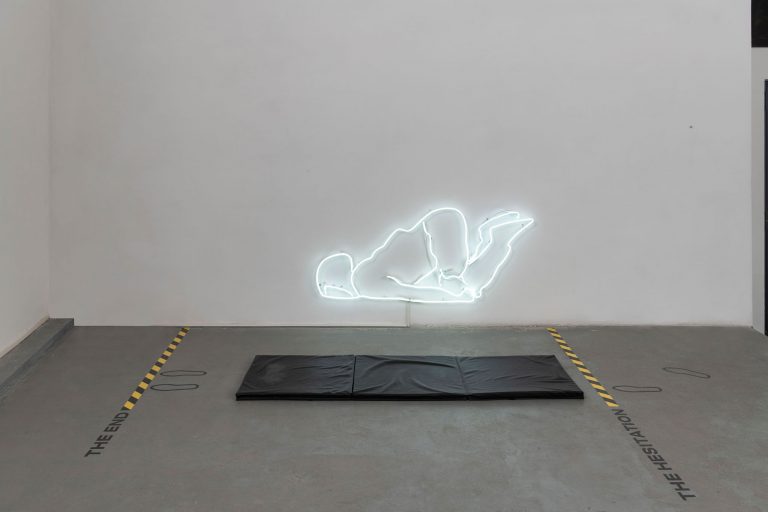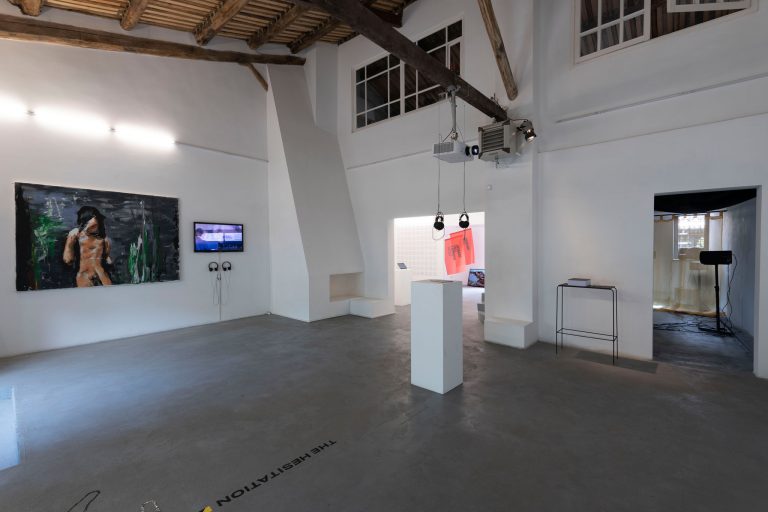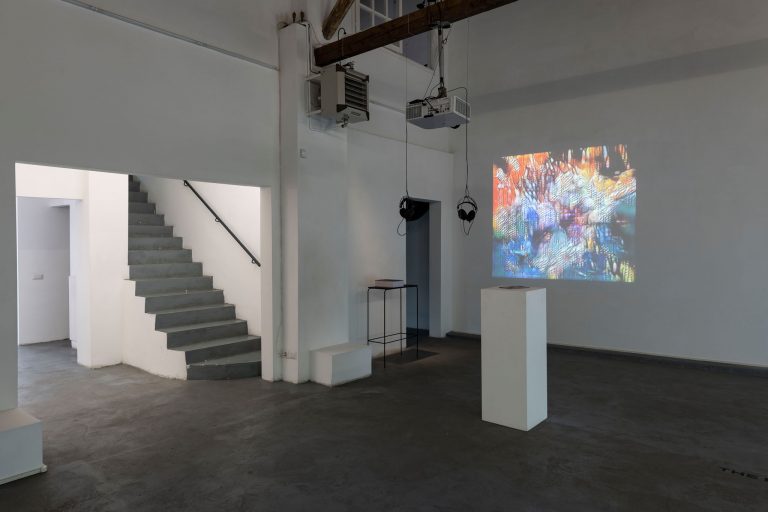Daniela Cotimbo
Art Curator
- Home
- About
- Re:Humanism
- Exhibitions
- OVERTON WINDOW: Solo
- Muovendomi, stando ferma.
- Second Order Reality
- The Stone Monkey
- Tecnoriti
- Sparks and Frictions Re:humanism #3
- Beyond Binaries
- Distrust Everything
- IperSitu
- Non sono io il fotografo
- Object Oriented Choreography
- Don’t you forget about me
- Re:define the boundaries Re:humanism #2
- Within a latent space
- Allegra ma non troppo
- Complessità
- Re:humanism art prize #1
- Ionian Archaeological Archives
- Die andere Seite
- Models of display
- Se non vedete segni o prodigi non credete affatto
- CsO
- ANDIAMO Là
- Talk
- Publications
- News
- Contact
Art Prize
Re:humanism #1

Re:humanism Art prize #1 edition
16.04.2019 – 11.05.2019
Collective exhibition
Curated by Daniela Cotimbo
Albumarte, Rome
Almost all of Re:Humanism’s proposals are a reflection on the theme of empathy, understood as an opaque border that distinguishes human experience from that of the technological artifact. In 1970 the Japanese robotics scholar Masahiro Mori presented in the scientific journal “Energy” the results of research in which he showed that the feeling of familiarity generated in a sample of people by anthropomorphic robots increased with the resemblance of the latter with the human figure. The side effect of this phenomenon is that at a certain point, the extreme realism leads to a sharp decline in positive emotional reactions in favor of unpleasant sensations like disorientation and repulsion, restlessness and disturbance. The research, renamed Uncanny Valley, pushes reflection on empathy to its limits and is the basis of works such as devenir-fantôme by Enrico Boccioletti, Adversarial Feelings: 1-5: Latent Selves by Lorem and The Fall by Giang Hoang Nguyen, winner of the first prize.
In the case of Boccioletti it is a matter of restoring the Uncanny Valley’s own dimension, staging a simulated dialogue between thinking machines, highlighting the empathic nuances and immersing the viewer in a destabilizing environment in which the machine speaks its own language.
Lorem is not a physical person, but a collaborative platform in which artists, designers and musicians question algorithms in order to reflect on the human (and non) components of the creative experience. In Adversarial feelings: 1-5: Latent Selves music and images generated by a neural network study human expressivity, giving rise to distorted and perturbing images that recall precisely that empathic short circuit to which Mori referred.
The Fall by Giang Nguyen is inspired by a famous Boston Dynamics video which shows the miraculous results achieved in making the movements of an automaton more fluid. Also in this case the result is disturbing: the more the movements of the robots become fluid, the more we feel a strong difficulty in becoming familiar with this representation. The work takes this reflection further, staging the limits of this identification process through performance. In one of the demonstration videos, the Atlas robot, after having masterfully performed various tasks, stumbles into one of the scene equipment and falls. The fall, indeed, becomes the starting point for reflection on the nature of human learning with respect to the artificial in which even failures play an educational role. Giang Nguyen’s work paves the way for another of the themes proposed by the ten finalists: often the man-machine boundary is investigated starting from those human characteristics to which a negative meaning is normally attributed. The failure for Nguyen, but also the boredom and repetitiveness in Urge Oggi by Daniele Spanò, the laziness and slowness of Demand full laziness, today. by Guido Segni.
In Spanò’s case, this repetitiveness is generated by a computer that plays to rock-paper-scissors. The artist demonstrates how this game is based on the human being’s ability to interpret the choices of those in front of him, identifying the recurrence of his choices and how these are applied. We cannot exclude that a machine can go that far, but certainly, at the present state of things, algorithmic calculation does not provide for the player’s empathic nuances, thus transforming the game into a random succession of meaningless gestures.
The work of Guido Segni hides behind his explicit ironic component a careful reflection on the semantic value of experiences such as work, boredom, and idleness. Segni (whose name is a pseudonym that emphasizes the artist’s programmatic choice) has delegated his production to a GANs (Generative Adversarial Networks) for five years, an algorithm capable of processing the image dataset submitted by the artist and generating new results, often difficult to interpret. It is curious to discover that composing this data archive are images that reflect the artist in what he called “creative leisure sessions”, that is images that portray him smiling, lying on a bed doing nothing. It is clear that behind these visual stimuli, there is the will to question consolidated categories such as work and identity that are based on it. If indeed the main risk is that automation can steal jobs from human beings, are we sure that the man of the future will need to work? Again, if this remote hypothesis comes true, what would be the sense of idleness and what would the industriousness be based on? The artist with his jokes seems to see the answers. Another recurrent theme among the selected projects concerns the use of algorithms as tools for a survey on the making of art, the requirements underlying human creativity and the capacity of a machine to replace man in these processes.
Here is an appropriate position statement. Faced with the succession of articles that loudly announce the introduction of works generated by algorithms within the art market, it is necessary to look beyond market trends and the surprise resulting from the observation that yes, an algorithm is capable of producing a result of its own, perhaps intercepting the style of Van Gogh or Picasso, but does not have a personal motivation to do so. Those who are more familiar with the contents of art know well that, beyond the final result, what makes us participate in a work are its premises. Behind these operations, it is difficult not to feel the human search for a horizon shared with the machine.
This is how works such as Grammar #1 by Antonio “Creo” Daniele, My Artificial Muse by the trio Barqué–Duran, Klingemann, Marzenit and A Brief History of Western Cultural Production by Adam Basanta are born. All these projects involve direct intervention by the algorithms in the creation of an aesthetic report.
In Antonio “Creo” Daniele the SketchRNN algorithm is the tool through which to investigate the nature of the sign, the primary source of communication, at the base of every artistic language. Through the transition from a “Human-grammar” to an “Artificial-grammar” the artist is able to identify clusters at the base of the graphic and expressive components.
Barqué-Duran, Klingemann and Marzenit start from the concept of “muse”, so dear to the historical and artistic tradition to question the algorithm in search of common patterns. What comes out is an alienating result, artificial intelligence in this case generates results of its own and far from the human linguistic conception. Here the effort is to create a dialogue between the two languages through one of the tools most akin to artistic creativity: painting. The inspiration emerges through a performative process which also includes the sounds of Marzenit. Everything is wisely orchestrated to answer the question: can a muse be artificial?
A Brief History of Western Culture by Basanta, as the title itself suggests, exploits the potential of AI to trace a path of meaning that takes into account the different instances of Western culture. This path is the result of the work of machine learning on a dataset of open-source images coming from the main world museums. What emerges is a potentially plausible product, the result of the various pieces of the cultural path that the machine was able to develop. More than stopping at the reliability of the result, Basanta shows us how culture today travels through networks thanks to the archives coming directly to its user and intervening directly in its identity construction.
Above digital identity also reflects the work of Michele Tiberio, this time however we speak of personal identity or rather of its projection through social networks and platforms where it is based on a complex of induced aspects: behind the will to show itself in a certain way there is a whole undergrowth of conversations and actions that give us back the complexity of an identity discourse. The artist collects all these personal manifestations in a publication and goes even further, questioning an algorithm in search of character patterns, the same ones that Diletta Tonatto, researcher and sociologist, olfactory designer and creator of the Maison Tonatto – who collaborates with Tiberio in the realization of Me, My Scent – uses for the realization of a fragrance that translates the digital identity of Tiberius into olfactory notes. In this work it is very interesting to understand the passage from virtual and intangible reality to the perceptive physical one.
To close the thematic path through the proposals of Re:Humanism ten winners there is Complexity, a performative work by Enrica Beccalli in collaboration with Roula Gholmieh which, as anticipated by the title itself, investigates the complexity but also the perfect balance of the mechanisms of cooperation that guide the movements of birds flocks. Looking at these, we cannot fail to notice its organic nature and fluidity and yet we are unable to identify a single driving element. As in a multi-voice concert, the result is more than the sum of its parts. The couple submits this movement to an algorithm that can then generate its path. The outcome is returned, through a series of physical inputs transmitted directly to the performer by interacting with his auricle, stimulating the areas dedicated to balance. This solicitation leads the dancer to introduce the movements generated by the AI within his improvisation. Complexity becomes a witness of a possible dialogue between man and machine through artistic experience.
